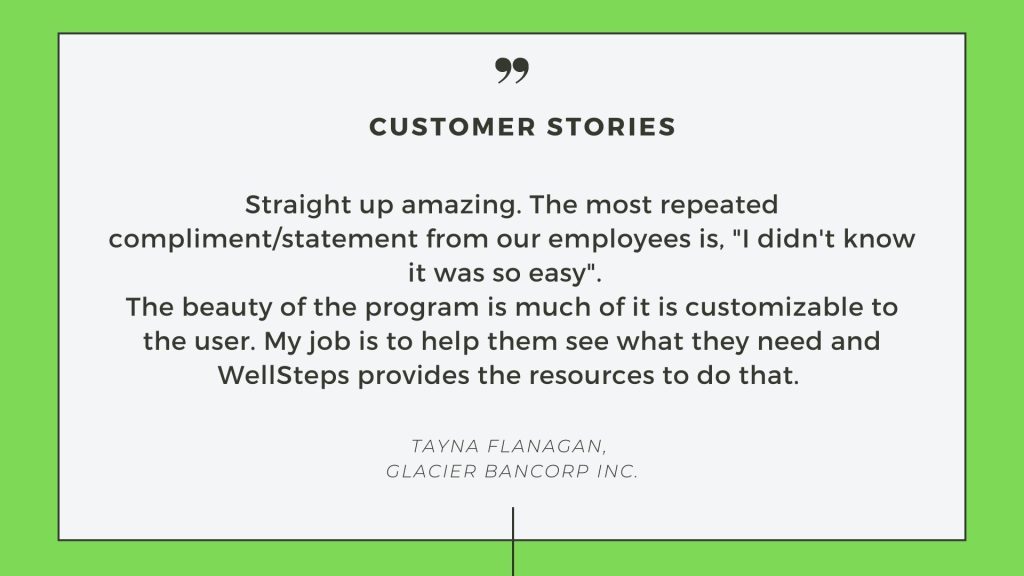Choosing the right employee health programs is crucial, as the prosperity of your business might hinge on it. The backbone of any organization is its people, and establishing wellness programs that provide practical and accessible care requires more than just financial investment.

Before the pandemic, most workers would show up to their jobs, whether they liked them or not, driven by the need for a steady paycheck and health benefits. However, the sudden change in our daily lives made many realize the importance of living fulfilling lives and the real value of their time.
In this article, we will introduce several low-cost health programs that primarily require time investment to succeed.
RELATED: How to Design Wellness Programs That Are Successful
Employee Health Programs Worth Investing In That Your Team Will Love
You might be surprised to learn that the most valuable employee health programs are often free or low-cost. While there are numerous programs available for purchase that can enhance employee health offerings, the most effective ones foster collaboration.
Isolation has taught us that everyone has unique needs that must be addressed. The more we show our employees we care about them beyond the responsibilities and rank, the better we can assure they’ll want to stick around.
The more we show our employees we care about them beyond the responsibilities and rank, the better we can assure they’ll want to stick around.
People are increasingly unwilling to endure unsatisfactory lives, and job satisfaction is a primary driver of their happiness.
Remote work has shown us that achieving a work-life balance is possible. This happens when employees are empowered to create a harmonious life for themselves and the company. By developing health programs tailored to their individual needs, you foster a workforce that is both happy and healthy.
RELATED: How Effective Workplace Health Programs Reduce Health Care Costs
Stress Management in Employee Health Programs
Imagine if stress could manage itself instead of constantly disrupting our lives and harming our health. Teaching employees effective stress management techniques is a valuable health program worth investing in.
There are many stress management apps available, which we highly recommend, and implementing best practices has been proven to enhance overall health and well-being.

Help Employees Identify and Tackle Stress Triggers
The first step toward successfully managing stress is by understanding the triggers that cause it to surface. It’s only when people understand what’s causing their anxiety that they can find preventative measures to try and stop stress from starting in the first place.
Schedule Stress Evaluations. Require employees to document and reflect on their stress levels throughout each workday, paying particular attention to any noticeable patterns. Once they identify the things that cause their stress to rise, they’ll be better equipped to prepare for it.
Take Stress Seriously. Once employees learn the peak times of their stress, have them identify the specific tasks and responsibilities that cause their stress. Then, encourage them to present reasonable solutions, and it could be as simple as an additional five-minute bathroom break, or making sure to spread tasks more evenly among team members.
Promote Positive Posturing. We all suffer from imposter syndrome at some point, but by scheduling time for your teams to perform self-evaluations that focus on their strengths and goals, you are helping them build a career they’ll care about and want to develop over time.
Be Open To Feedback. Too often, companies state that they want new ideas, but at times that leads to defensiveness, and leaders unable to adapt to change are quick to alienate teams. All ideas don’t need to be acted upon, but those who want to contribute in constructive ways should be learned from, heard, and considered.

Create A Stress Plan. Once emphasis has been placed on managing stress, work with employees to find ways to help them reduce their triggers. Understanding their individual needs and developing healthy outlets that align with company goals will help them manage the stresses from everyday responsibilities.
RELATED: 24 Ways Employers Can Manage Stress At Work
Supporting Time Management in Employee Health Programs
Do you find that time management is a recurring challenge for your team? Despite the myriad of time management tools available, our fast-paced world often overwhelms our abilities, making effective time management a persistent issue.
Implementing time management strategies should begin at the top. If you’re struggling with employee retention, take a closer look at their workloads.
Setting unrealistic expectations in the workplace is a rapid-fire way to lose talent.
Setting unrealistic expectations in the workplace is a rapid-fire way to lose talent. Unstructured and poorly managed companies are less attractive than many employers once thought. Employees seek control over their work-life balance, but not at the cost of increased stress.
Time Flexibility. Flexibility with work schedules is a massive draw in today’s market because let’s be honest, no one wants to miss their kid’s soccer game to get non-urgent tasks done.
- Encourage employees to set realistic goals
- Help them prioritize the hierarchy of their responsibilities
- Empower them to protect their time
Methods to Help Employees Release Stress
We all get overwhelmed and frustrated, and when not dealt with, those feelings have the possibility to lead to resentments and misunderstandings. By learning to keep perspective, employees are likely to deal with stressful situations in productive ways rather than damaging ones.
Here are a few ways you can encourage your team to keep calm and carry on:
- Encourage them to see areas of frustration from multiple points of view
- Allow them to take breaks when faced with stressful situations
- Help them find healthy outlets to release pent up stress like reading or journaling
- Remind them they matter by encouraging them to take care of themselves
- Help them set boundaries for uncontrollable stressful situations
Misunderstandings happen, and by helping people see multiple points of perspective, they are better equipped to manage the stressful times to enjoy the rest.
RELATED: 24 Ways Employers Can Manage Stress at Work

Provide Some Form of Mental Health Access in Your Employee Health Programs
Did you know the CDC reports that nearly 1 in 5 US adults aged 18 or older (18.3% or 44.7 million people) reported mental illness in 2016, and 71% of adults reported at least one symptom of stress, such as a headache or feeling overwhelmed or anxious?
Not long ago, mental health was highly stigmatized, often creating embarrassment for those willing to admit to their struggles. Today, online therapy platforms are a top contender of the ads circulating the various media forms we have access to.
Left untreated, poor mental health and stress can negatively affect:
- employees’ job performance
- productivity
- engagement with their work
- communication with coworkers
- limits of physical capability
- daily functioning
Depression is also associated with higher rates of disability and unemployment claims.
“Depression interferes with a person’s ability to complete physical job tasks about 20% of the time and reduces cognitive performance about 35% of the time.”
CDC.com
While not every business has the resources to send their employees to behavioral health specialists, the skyrocketing demand for therapists has helped pave the way to affordable alternatives to traditional therapy.
Although there are still only a few mental health apps available, they are already showing significant success. Here are a few worth checking out (and aren’t bad on the budget).
BetterHelp. As the largest therapy platform worldwide, their goal is to “Change the way people get help with facing life’s challenges by providing convenient, discreet, and affordable access to a licensed therapist.” They offer professional therapy available anytime, anywhere, through computers, tablets, or smartphones.
TalkSpace. This medication management app is a licensed prescriber for anxiety, depression, and other mental illnesses.
HeadSpace. This meditation app was designed to help people incorporate mindfulness and meditation throughout their day, helping them consistently manage stress.

Organize Collaborative Movement
Sure, we can go far on our own, but we can go so much further together. Organizing collaborative movement is a fantastic employee health program worth investing in, not just for the obvious health benefits but also for overall morale.
Getting outside for some good old vitamin D is always a great tactic to incorporate fitness and help a team bond.
Group Fitness. No surprise here, you might be thinking, but there’s a reason group fitness often makes it into conversations centered around employee health programs worth investing in: they’re proven to produce results. When people are doing something fun that doesn’t feel like exercise, it helps them remember how good it feels to get out and move.
Show Them The Money. Who doesn’t love winning the pot of a company challenge? However, programs with money as incentives where everyone gets a piece of the pot give employees extra incentive, helping them earn some dough while sweating off some frosting.

Try App-Based Challenges. One of the best parts about apps is their ease of use, being ready and able to start collecting health data immediately. Couch to 5K is a great one to start with and has a 4.6 rating from over 3.9K reviewers.
RELATED: 50 Office Challenge Ideas Including Office Fitness Challenges
Emphasize Emotional Fitness in Your Employee Health Programs
You might not have heard this one before, as it’s a relatively new term, but emotional fitness should be on your radar when it comes to employee health programs worth investing in.
A person who is emotionally fit can:
- balance essential needs
- cultivate feelings of belonging and purpose
- flourish individually
An organization that is emotionally fit in the workplace happens when they enable workers’ essential needs through processes designed to sprout a sense of belonging and purpose.
An organization that is emotionally fit in the workplace happens when they enable workers’ essential needs through processes designed to sprout a sense of belonging and purpose.
Providing opportunities to help employees thrive has been proven to increase productivity, improve work quality, reduce work-related injuries, and support alertness.
Common Problems of Employees Associated With Emotionally Unfit Companies
Inability to concentrate. When team members aren’t able to concentrate, it often leads to procrastination, exacerbating indecision, and increased difficulty in decision making.
Increased trips to the doctor. Aches and pains require additional healthcare appointments, unnecessarily increasing preventable health care costs.
Poor work quality. Untreated emotional issues often lead to forgetfulness, leading to missed deadlines and increased absenteeism, resulting in poor work quality.
Unstable moods. Irritable or tearful employees might negatively affect relationships with coworkers and clients, resulting in low morale and decreased presenteeism.
Showing your team the importance of emotional fitness by demonstrating it from team leaders is a great way to show employees what health success looks like.
RELATED: WellSteps Physical Activity, Healthy Eating, and Emotional Health Challenges
Learn New Skills Together
As highlighted above, an important aspect of an employee’s health and happiness is having a sense of belonging and purpose. While not everyone thrives in social settings, creating opportunities for your team to connect is crucial.
Providing employees with chances to relax in a space with their coworkers, specifically designed for non-work activities, is an excellent way to boost participation. Ensure these activities require employees to keep their hands busy for a set period, as this can help engage even those who might be less comfortable in social situations.
Fun Learning Activities Your Team Will Love
Cooking Classes. Look into local cooking classes, or better yet, hire a chef from a nearby favorite to come and teach your team some new skills. Chopped challenge anyone?

Home Gardening Classes. Whether getting tips from Ron Finley, the MasterClass “Gangsta Gardener” Instructor, or taking a community class on native plants, gardening is a great activity to get your team working together.
Skillshare. Take some time to flex those creative muscles in a photography class, or stock up on art supplies and test out a watercolor lesson with your employees. If your team doesn’t jive too well on the creative side, the site also offers business courses in leadership, marketing, and management, along with many other categories.
The best team leaders aren’t afraid to show their vulnerable side (remember that whole emotional intelligence we referred to above), and when employees see their leaders figure out how to work through their new challenges; it might just inspire them to do the same.
RELATED: 16 Staff Wellness Activities for Creating a Healthier Workplace
Require Work-Life Balance
If only we could go back in time and reconsider the creation of the five-day workweek. In some ways, Covid-19 did just that, but instead of reducing workdays, it introduced the hybrid work model, balancing office and remote work.
People are generally willing to complete their required hours. However, after five consecutive days of commuting, preparing healthy meals, and attending to family needs, maintaining work-life balance becomes unsustainable. This reliance on fast food is no surprise.

While not all businesses can offer remote work, providing employees with some autonomy can significantly build trust. Strict hourly confinements are becoming obsolete in many industries, and leading this change is a powerful way to show employees they matter.
By offering flexible working hours and remote options when possible, you provide your team with something invaluable: time. This flexibility can greatly enhance their work-life balance, a benefit that is truly priceless.
There are plenty of employee health programs worth investing in, and often the most important investment is time.
RELATED: 6 Strategies for Successful Wellness with Remote Workers
Here’s a Recap of Everything We Covered About employees Health Programs
When choosing an employee health program, make sure not to overlook the internal changes that can be made in addition to wellness benefits. Like our bodies, the best way to see change on the outside is by first caring for the inside.
Stress Management
Empower team members to manage their stress.
8 Steps To Success
- Help Employees Identify and Tackle Stress Triggers
- Schedule Stress Evaluations
- Take Stress Seriously
- Promote Positive Posturing
- Be Open To Feedback
- Create A Stress Plan
- Be Realistic About Their Time Management
- Help Them Keep Perspective
Provide Some Form of Mental Health Access
No matter which way you go here, this is likely one of the best employee health programs worth investing in. We’re big fans of apps like BetterHelp, TalkSpace, and HeadSpace.
Organize Collaborative Movement
Get them involved and give them a prize to work for with the added bonus of team building and fun!
- Group Fitness
- Show Them The Money
- Try App-Based Challenges
Emphasize Emotional Fitness
Spend some time thinking about ways to improve the emotional fitness within your company and take care of it from the inside out.
Learn New Skills Together
- Cooking Classes
- Home Gardening Classes
- SkillShare
Support Work-Life Balance
The WellSteps team has helped thousands of employees improve their health, and we’d love the opportunity to demonstrate to you how we can help you with an employee health program. Schedule a Free Demo and take the first steps toward wellness for your team, your company, and you.
